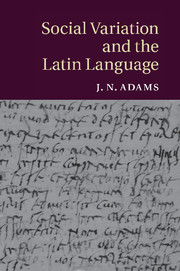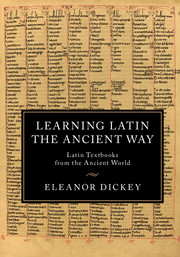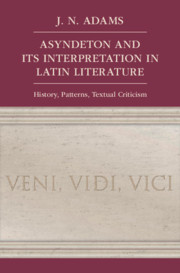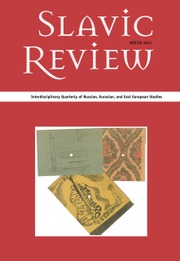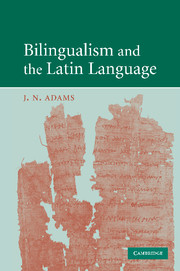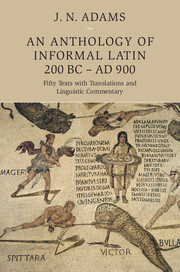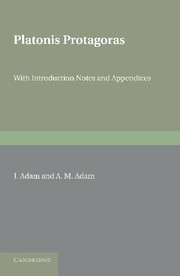Social Variation and the Latin Language
Languages show variations according to the social class of speakers and Latin was no exception, as readers of Petronius are aware. The Romance languages have traditionally been regarded as developing out of a 'language of the common people' (Vulgar Latin), but studies of modern languages demonstrate that linguistic change does not merely come, in the social sense, 'from below'. There is change from above, as prestige usages work their way down the social scale, and change may also occur across the social classes. This book is a history of many of the developments undergone by the Latin language as it changed into Romance, demonstrating the varying social levels at which change was initiated. About thirty topics are dealt with, many of them more systematically than ever before. Discussions often start in the early Republic with Plautus, and the book is as much about the literary language as about informal varieties.
- Presents a new history of the development of Latin from early Latin to the emergent Romance languages, by a leading expert in the field
- Presents new material as well as old evidence that has long been neglected in histories and grammars of the language
- Departs from the old concept of 'Vulgar Latin' and is influenced instead by modern sociolinguistic research
Reviews & endorsements
"More than any scholar of the modern era, [Adams] has revealed features of Latin which bring the language to life as a dynamic vehicle of communication among everyday speakers. … The present study reflects [his] mastery of an extraordinary range of Latin texts. … [Adams] has given us a rich resource for consultation; he has addressed a range of topics worthy of further research; he frequently provides a potent corrective and supplement to standard Latin grammars and accounts of the rise of Romance languages."
Philip Baldi and Paul B. Harvey, The Classical Review
"… Adams' unsurpassed knowledge of the Latin language and his outstanding philological acumen [are] everywhere on display in this book, which contains a wealth of new insights into Latin texts of all periods. There will be a temptation for Latin scholars to buy this book and use it as a work of reference. The organization of the chapters, the level of detail and the excellent indices mean that it could profitably service as such … Those who read [it] will undoubtedly be richly rewarded."
James Clackson, The Journal of Roman Studies
Product details
September 2016Paperback
9781316629499
956 pages
230 × 153 × 50 mm
1.5kg
3 b/w illus.
Available
Table of Contents
- Preface
- Part I. Introduction:
- 1. Introduction: 'Vulgar Latin' and social variation
- Part II. Phonology and Orthography:
- 2. Phonology: introductory remarks
- 3. Vowel system
- 4. Diphthongs
- 5. Syncope
- 6. Hiatus
- 7. The aspirate
- 8. Final consonants
- 9. Contact assimilation
- 10. B/V
- 11. Phonology: conclusions
- Part III. Case and Prepositions:
- 12. The nominative and accusative
- 13. Oblique cases and prepositional expressions
- 14. Miscellaneous uses of the accusative
- 15. Locative, directional and separative expressions: some variations and conflations
- 16. The reflexive dative
- 17. Prepositions and comparative expressions
- 18. Case and prepositions: some conclusions
- Part IV. Aspects of Nominal, Pronominal and Adverbial Morphology and Syntax:
- 19. Gender
- 20. Demonstrative pronouns: some morphological variations
- 21. The definite article and demonstrative pronouns
- 22. Suffixation (mainly adjectival) and non-standard Latin
- 23. Compound adverbs and prepositions
- Part V. Aspects of Verbal Morphology and Syntax:
- 24. Past participle + habeo
- 25. The periphrastic future and conditional, and present for future
- 26. Reflexive constructions and the passive
- 27. The ablative of the gerund and the present participle
- Part VI. Aspects of Subordination:
- 28. Reported speech
- 29. Indirect questions
- Part VII. Aspects of the Lexicon and Word Order:
- 30. The lexicon, a case study: anatomical terms
- 31. The lexicon: suppletion and the verb 'go'
- 32. Word order, a case study: infinitive position with auxiliary verbs
- Part VIII. Summing Up:
- 33. Final conclusions.

